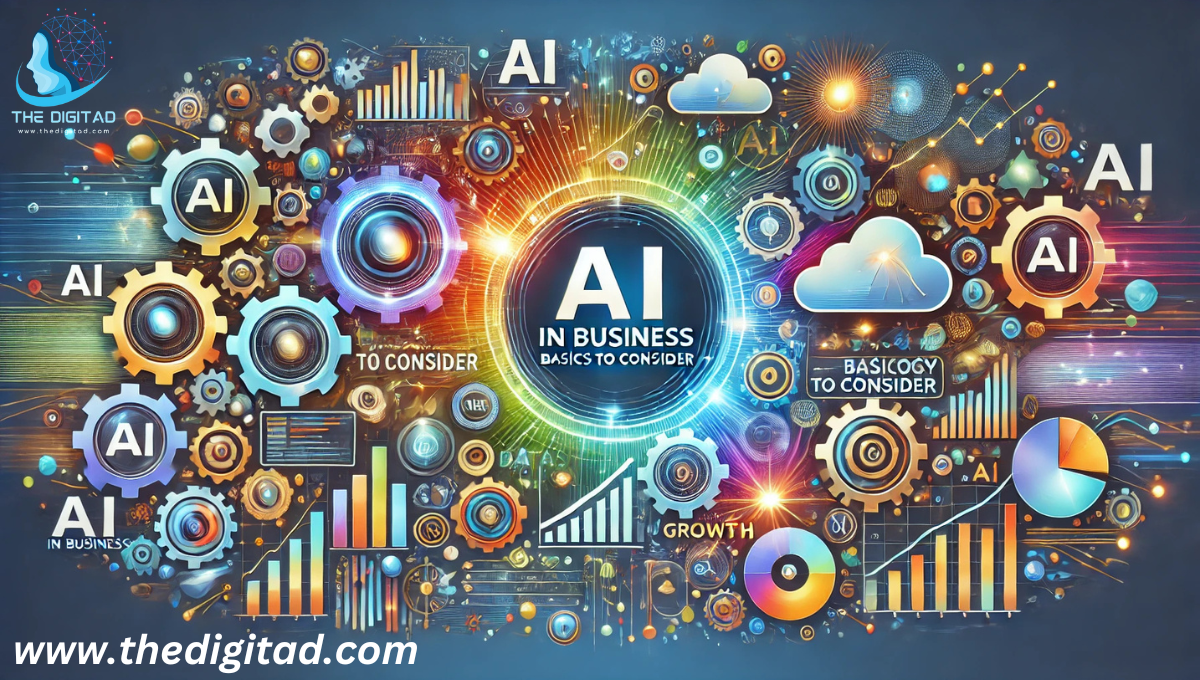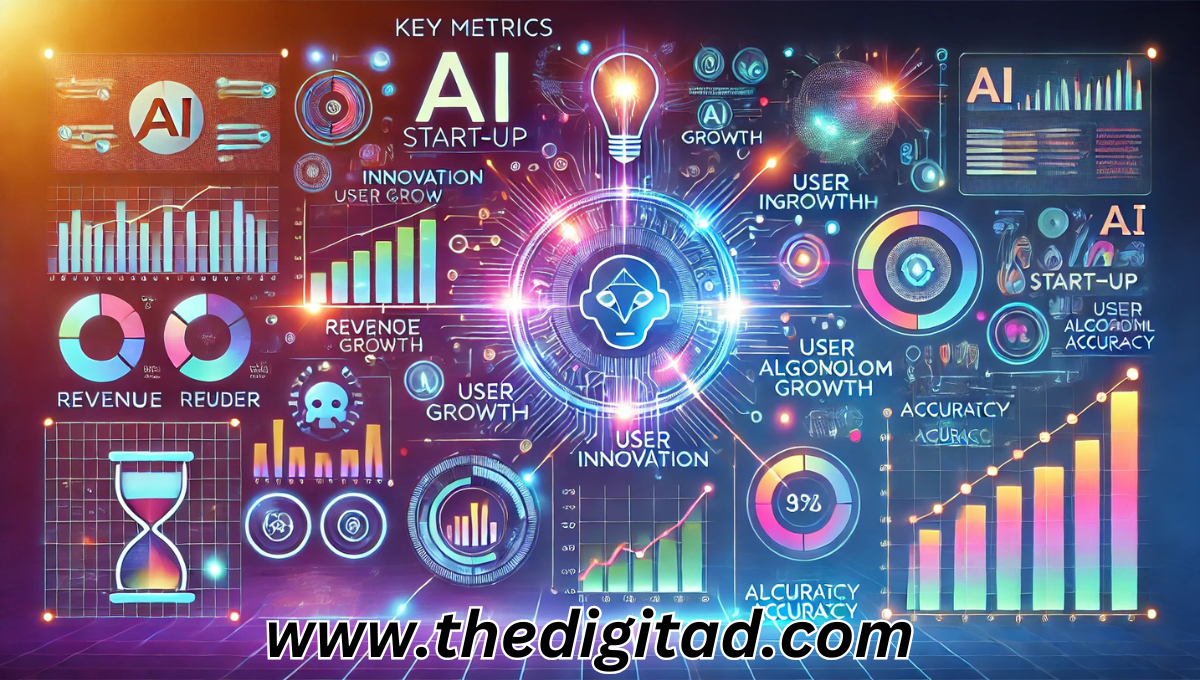AI in Business basics to consider
There is a growing interest in Artificial Intelligence (AI) in the business sphere which offers unprecedented advantages and operational efficiencies. Just from simple task execution or operational reporting, AI has become a primary resource for many organizations today. However, there is a need for businesses to know some key things before engaging in AI. Here, we’ll delve into the AI in Business Basics to consider exploring the key factors companies need to think through before implementing AI.
Why AI is Important in Business?
We can say that artificial intelligence (AI) is a technology everyone is going to use in some time, which is not true. It has contributed a lot to businesses in scaling up their operations and serving their clients better as well as making better decisions. With the use of AI, organizations are able to automate certain work functions, improve client relationship, and use big data. However advantageous this technology may prove to be, embedding it into a business is not without its own constraints. So, let’s step to the deeper water and outline some key points.
1. Understanding AI’s Role in Business

Assessing Your Business Needs
The most pressing issue in the use of AI, however, is identification of specific business needs first before actual use of any AI. Start by asking questions like.
- What tasks do you want to automate?
- What problems do you aim to solve?
- How will AI improve your current processes?
The very first and most important step in achieving a successful AI integration is identifying the problem. Most organizations however tend to embrace AI technologies without necessarily having a clear target which more often than not results into resources being wasted or unfavorable outcomes being recorded.
Data is Key
The disposition of the system is highly reliant on information. AI works effectively room in the presence of sufficient and quality information. To get the most out of AI, make sure you have good data architecture in place. You will also have to make a choice between the need for data processing in real-time or in batches.
2. Key AI Technologies in Business
AI encompasses multiple technologies that serve different purposes. Here are a few key factors worth bearing in mind.
| AI Technology | Business Application |
| Machine Learning | Predicting customer behavior, risk analysis |
| Natural Language Processing (NLP) | Chabot’s, sentiment analysis |
| Computer Vision | Quality inspection, facial recognition |
| Robotic Process Automation (RPA) | Automating routine activities |
| Analytics for Prediction | Demand planning and sales forecasting |
Every industry has its own specific needs for AI, which makes it all the more necessary to appreciate the possibilities available.
3. The Benefits of AI in Business
There are several benefits AI presents, such as.
You complete more work in less time
AI simplifies and speeds up repetitive processes thereby allowing other workers to do strategic work. For example, data analysis and reporting can be done much faster thanks to artificial intelligence tools.
Better Decision Making
AI possesses the capability to process vast amounts of information providing valuable insights which are almost impossible to obtain manually. This makes it possible to take data-led decisions faster which enhance the speed of operations within a system.
Enhanced Customer Experience

Enhanced Customer Experience
With the implementation of Chatbot’s and AI personalization, companies are able to provide rapid and personalized feedback improving customer contentment and retention.
4. Main Factors To Consider While Applying AI in an Organization
When thinking about AI in Business Basics to Consider, remember that planning and alignment with business goals are essential. Here’s what to keep in mind.
Budgeting for AI Implementation
AI systems can be costly, not only in development but also in maintaining infrastructure. Consider expenses like.
- Software development costs
- Data storage and management
- Employee training
Before setting up an AI system, ensure your budget allows for its long-term support.
Data Privacy and Security

AI systems require significant data, including potentially sensitive information. In order to protect customer information, it is important to follow laws regarding the protection of customer data (customer data law EU GDPR). Use of regular audits and encryption can help enhance data security.
Employee Training and Buy-In
Employees may need new skills to work alongside AI technologies effectively. Provide necessary training and address any concerns they might have regarding job security. Successful AI integration often depends on how well your team adapts to new workflows.
5. Possible Difficulties in Integrating AI
AI implementation is not without its difficulties.
Data Quality Issues
The success of AI is largely based on the quality of data. If the data provided is of a bad quality, AI outputs can be inaccurate and negatively influence business decisions. Implement data-cleaning processes to ensure reliable inputs.
Scalability
AI models need to scale as your business grows. The chosen AI solution must mature with your business and not repeat the implementation costs every other year.
Bias and Ethical Issues
Diverse biases in AI models can arise from unrepresentative data sets on which they are being trained. Sometimes this would lead to results skewed on the discriminator lines; hence, it affects the trust of the customer and reputation of the brand. Implement a process to regularly review and adjust algorithms to mitigate bias.
6. Benefits vs Limitations: A Quick Overview
Here’s a quick comparison of AI’s advantages and limitations to give you a balanced view.
| Advantages of AI in Business | Disadvantages of AI in Business |
| Automates repetitive tasks | Requires significant initial investment |
| Enhances customer experience | Data quality can impact effectiveness |
| Improves decision-making | Potential for bias in algorithms |
| Scales with business needs | Requires skilled employees and training |
7. Beginning to Use AI in Business
Starting with AI does not require a complete redesign. Consider starting with small projects, like automating data entry or introducing a Chabot. Begin by.
- Clearly defining goals – Clearly define your goals.
- Choosing the right AI tools – Identify tools that meet your goals.
- Investing in employee training – Ensure employees understand and support AI adoption.
Gradually scale as you assess the impact of these initial projects.
8. Examples of AI in Business
Customer Service and Support
Chabot powered by AI can take care of customer queries anytime ensuring speedy answers and eliminating the bulk of support personnel.
Optimization of Supply Chain
Utilizing AI technology, organizations surpass demand management, operational optimization, and supply chain ineffectiveness mitigation into enhanced efficiency.
Marketing and Sales
With the use of AI, customer trends can be studied, thus enhancing audience targeting and sales through personal marketing strategies.
Financial Services
The banks apply artificial intelligence in detecting fraudulent transactions, analyzing credit risks, and making suggestions on investments; thus, the accuracy and efficiency of financial operations are enhanced.
FAQ: AI in Business Basics to Consider
Q1: What will be the cost of installing AI into the organization?
The cost varies significantly depending on the scale, complexity, and technology that are involved. Costs go anywhere from a few thousands of dollars in the case of simple tools produced to millions for highly complex and sophisticated solutions targeted at corporations.
Q2: How fast can I expect results from implementation of AI solutions?
With simple AI applications such as Chabot’s, results can be seen within a few months’ times. In other projects, it may take 6-12 months to see any measurable good results.
Q3: What do I need to begin working with Artificial Intelligence?
Qualitative and pertinent data that pertain to the areas of the business you wish to improve is essential. Within this, depending on the AI application, it may include both structure data, such as number and unstructured data such as text or images
Q4: Can AI replace employees?
The introduction of AI assists in the automation of numerous basic activities helping the employees concentrate on the value added tasks. In fact, it is more of the employment of Artificial Intelligence alongside employees than its total employment.
Q5: Is AI secure for businesses to use?
AI can be secure if you implement the right data protection measures, including encryption, regular audits, and adherence to privacy laws.
Final Thoughts on AI in Business Basics to Consider
It is true that incorporating AI in businesses offers great opportunities including improved customer service and better use of information in making choices. Nonetheless, its effectiveness is hinged on an appropriate strategy, availing high quality data and ensuring the people are ready. Having basic knowledge is very important for laying the ground for AI to contribute positively to your organization.
The principles of AI in Business Basics to Consider are more of a course trendy but rather a strategy that can make history in your organization.
Read more Article About AI & ML and other categories at The Digit Ad



















Post Comment